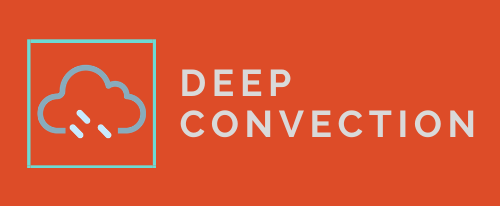
Growing up on Long Island, Sandra Yuter loved to go on field trips—she learned about how glaciers had shaped the environment around her and was fascinated by how the resulting landscape still told the history of its geological past. The combination of scientific exploration and imagination that these field trips offered was something Sandra also drew to science fiction, another passion that she shares with Adam.
Sandra has turned her interest in science into a career; she is a distinguished professor at the department of Marine, Earth and Atmospheric Sciences at North Carolina State University. Her research uses measurements made by remote sensors, including radar, satellite, and lidar, as well as in situ measurements, to understand processes in the atmosphere, especially those related to clouds and precipitation. And occasionally, she even gets to be a bit of a science fiction writer herself:
And it turned out I was particularly good at writing proposals and my lab manager […] explained that proposal writing is a lot like writing science fiction because you’re basing it on what’s here today, but you’re sort of pushing the technology a bit. […] If you think about my interest and all my background reading in hard science fiction, which is what’s gonna be going on 10 years from now, or 20 years from now, or 50 years from now, you could sort of translate that to, “Okay, given what we can do right now, what can we do two years from now or five years from now?”
Sandra has made important advances on a wide range of meteorological problems, including the structure, dynamics, and cloud microphysics of deep convection in the tropics; shallow stratocumulus-topped boundary layers; and winter storms in the extratropics.
Methodologically, Sandra’s work has contributed to the algorithms used to retrieve precipitation from satellite measurements, and to the diagnostic methods used to infer physical processes in precipitating clouds from radar observations. As one particularly prominent example, the contoured frequency by altitude diagram, or CFAD, that she conceived more than 25 years ago is now a standard and widely used diagnostic.
As an “observationalist”, Sandra has done a lot of field campaigns, and she talks here with Adam about some of the challenges of these campaigns, the decline of the routine observational network, and the way the prominence of climate “reanalysis” data sets (which are observation-based, but not literally observations) may have contributed to that.
Later in the conversation, Adam and Sandra also get into the questions of how to do usable science and contribute to solutions to the climate crisis. Sandra’s view on this is informed by her early experiences doing science in the private sector, including at a defense contracting company before grad school. But more recently, like Adam, she’s been thinking more broadly about how to do science that may have a concrete impact. And that conversation leads them into solar geoengineering, the role of the private sector in climate and weather science, and other topics.
I think atmospheric science has done a really good job of explaining and understanding the climate problem, but maybe we’re not the solution, maybe the solution is more on the engineering side, and partly, that’s just building buildings that are more resilient or moving infrastructure, or figuring out how to do carbon capture in a scalable way, or investing in fusion […]. Maybe we should just say, “Hey, we’ve done a really good job explaining the problem, giving you the likely scenarios and the potential timing of those scenarios. But the actual more pragmatic solutions are not what we do.”
The interview with Sandra Yuter was recorded in February 2022. Image credit: Sandra Yuter
- Sandra’s website at North Carolina State University

I just listened to this interview and I’m curious if you are familiar with the movie “Kiss the ground” and it’s claims of carbon sequestration in the soil. The film talks about weather patterns related to soil health, and those patterns being disrupted by mono culture farming practices.
Does your field of study have any overlap with this? Are the claims real? Is there any conversation happening between your research and soil research?